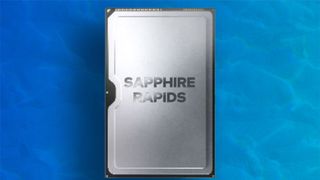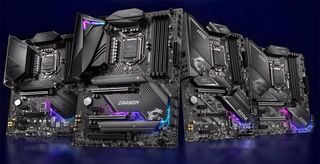Next-gen Intel enthusiast CPUs appear in leaked roadmap, but don't hold your breath
If all goes to plan, and that's a big if, these chips won't arrive until roughly June, 2022.

For datacentre boffins, Sapphire Rapids is sure to be one of the most exciting developments out of Intel in recent years. Enthusiasts, too, can expect Sapphire Rapids to shake up the often-ignored HEDT computing segment. At some point. The implied question for enthusiasts there is, when? According to leaked roadmaps: probably not for another eleven months, at the earliest.
Slides sent to Videocardz suggest Sapphire Rapids, and a compatible W790 chipset, will not arrive until late on in the second quarter of 2022. That's roughly June, 2022. Similarly, Intel Alder Lake, suspected to arrive in October alongside a potential Windows 11 release, is tipped here to arrive by the tail end of Q2, 2021. That's more likely September, then.
What we can't account for here is the likelihood of out-of-date information within this leaked roadmap, or of Intel changing things up at the last minute, as it's often wont to do.
In fact, Sapphire Rapids server chips, known as 4th Gen Xeon Scalable, have recently been shifted ahead to production in the first three months of 2022 and ramp up in the second quarter following. That will almost certainly mean HEDT chips planned for around that time will similarly be pushed back, too. They are the same silicon under the surface, after all.

Best gaming motherboard: the best boards around
Best AMD motherboard: your new Ryzen's new home
But here's what you have to look forward to when the time comes, anyways.
Sapphire Rapids will mark a major shakeup in Intel's DNA, equivalent to that expected on desktop with Alder Lake later this year. It's built on the 10nm process, supports PCIe 5.0 and DDR5, and will incorporate a chiplet-based packaging and architecture to offer heaps of onboard functionality not yet seen. That includes cramming HBM memory onboard, which sounds pretty sweet, if you ask me.
Enthusiast chips will likely follow the lead of previous HEDT (high-end desktop) processors, such as Intel Cascade Lake X. That means a server chip under the heat spreader, but with a more enthusiast/gaming/professional chipset and platform than your usual server motherboard.
The biggest gaming news, reviews and hardware deals
Keep up to date with the most important stories and the best deals, as picked by the PC Gamer team.
The arrival of high core count standard desktop processors, such as the Ryzen 9 5950X, have no doubt taken a bite out of the HEDT market, and even Intel is cranking up core counts with Alder Lake and Raptor Lake (be it small Atom cores).
However, there are other benefits to server-grade chips on desktop: HEDT chips tend to offer massive core counts, much greater numbers of PCIe lanes, and larger cache sizes for truly immense megabuilds.
All that does often come at a cost, however, and Intel's offering as of late tends to slip behind AMD's equivalent Ryzen Threadripper platform. As such, you don't hear all too much about Intel's 10th Gen Core X processors.
But that's not to say Sapphire Rapids HEDT chips won't be exciting. If anything, the potential of a powerful server architecture in Sapphire Rapids means Intel may actually have something to offer enthusiasts and overexcited gamers with its HEDT processors built on the same architecture.
In the meantime, AMD may announce its answer to Sapphire Rapids in brand new Threadripper processors, presumably the 5000-series. So far we've not heard a peep out of the company on that front, but I suppose no news is good news?

Jacob earned his first byline writing for his own tech blog. From there, he graduated to professionally breaking things as hardware writer at PCGamesN, and would go on to run the team as hardware editor. He joined PC Gamer's top staff as senior hardware editor before becoming managing editor of the hardware team, and you'll now find him reporting on the latest developments in the technology and gaming industries and testing the newest PC components.
Most Popular






